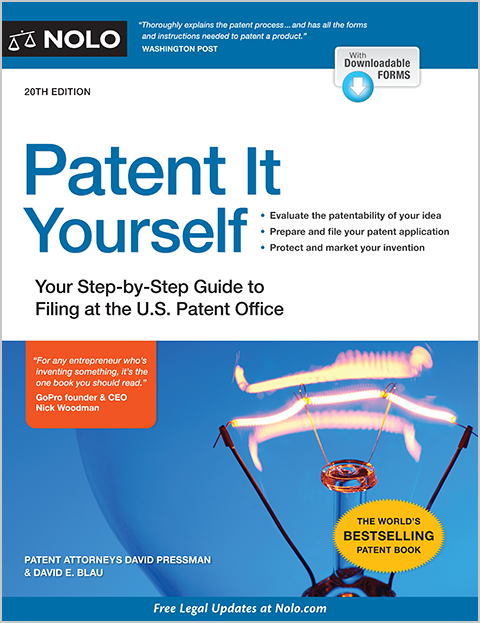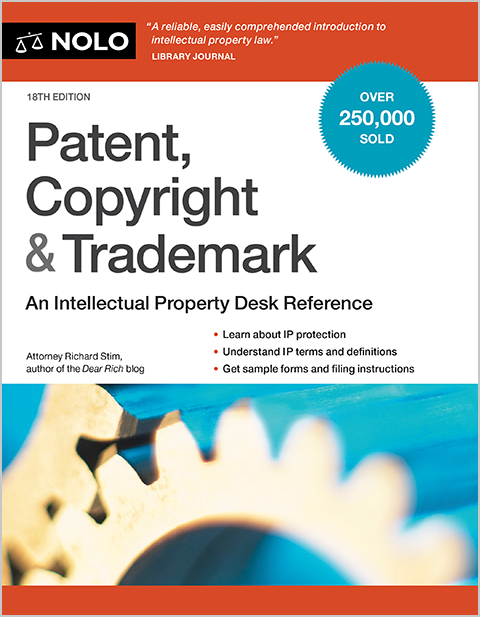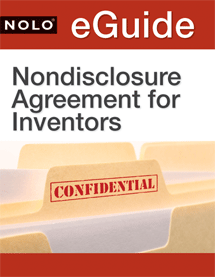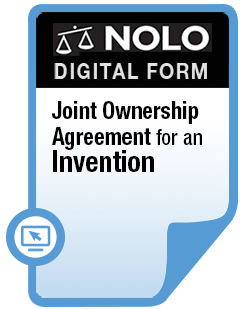A nondisclosure agreement (NDA) helps a business protect its trade secrets, among other confidential information.
All businesses maintain confidential information. Confidential information includes trade secrets and other information that businesses want to protect. Nondisclosure agreements ("NDAs") allow companies (and people) to disclose confidential information with the condition that the party receiving the information will keep it secret.
In this article, we address the following topics to help you understand how NDAs work and how you can use them to protect your business:
How Are NDAs Used?
Businesses use NDAs in two main contexts:
- Employment. A company might enter into NDAs with employees to keep trade secrets from walking out the door when those employees leave..
- Business transactions. Individuals and companies enter into all sorts of negotiations and transactions that involve the sharing of confidential information. For instance, inventors might pitch their inventions to potential licensees, two companies could work together on the development of new technology, or a business owner might meet with a potential buyer of their company.
NDAs have long been popular in technology industries, but their use has become commonplace in most industries. If you enter into a transaction or relationship in which you'll receive the other party's confidential information, you shouldn't be surprised if they ask you to sign an NDA. Or, if you're going to be disclosing confidential information, you should insist that the receiving party sign an NDA.
How an NDA Protects You
Let's say that you or your company will be disclosing confidential information. That makes you the "disclosing party." The other party, the one you're disclosing to, is the "receiving party." An NDA creates a confidential relationship between you and the receiving party and obligates the receiving party to keep the information secret.
If the receiving party breaches this obligation, you can seek a court order (an injunction) to stop the violator from making further disclosures. You can also sue the receiving party to collect damages for any financial loss as a result of the NDA violation.
Mutual and One-Way NDAs
NDAs can be "mutual" or "one-way."
In a one-way NDA, confidential information flows in only one direction, making one side the disclosing party and the other the receiving party.. An employer-employee NDA is a one-way NDA, with the employer's confidential information being disclosed to the employee.
In a mutual NDA, both sides are exchanging confidential information, meaning that each is a disclosing party and a receiving party. For example, let's say that you're going to pitch your invention to a potential licensee (a company to manufacture and sell your invention). You'll obviously be sharing confidential information about the invention. The potential licensee might be sharing confidential information about their manufacturing capabilities and marketing plans. This kind of exchange of confidential information calls for a mutual NDA, with each of you agreeing not to disclose the other's confidential information to third parties.
Protecting Trade Secrets (and More)
An NDA protects confidential information, including trade secrets. Your trade secrets are information that:
- isn't known by others
- has economic value because you know it and your competitors don't, and
- you take reasonable measures to keep secret.
One reasonable measure you can take to protect your trade secrets is to use NDAs when you disclose them. Other protective measures include physical security and cybersecurity to control access to the information.
While all trade secrets are confidential in that they aren't known by others, not all confidential information is a trade secret. For example, salary information for your employees isn't a trade secret, since the information itself doesn't have economic value. But you wouldn't want someone who has access to it to share it outside the company. So, if you're hiring an employee who will have access to your salary information, you might identify that information in an NDA. As we discuss below, confidential information in an NDA should be defined broadly enough to include trade secrets and other proprietary information.
To learn more about the essentials of trade secret law, including what you can protect, see Trade Secret Basics FAQ. Note that trade secret laws vary from state to state, although the overall concepts are very similar across the United States.
Elements of a Nondisclosure Agreement
There are a number of important elements in a nondisclosure agreement, including:
- the purpose or context of the agreement
- a definition of "confidential information"
- exclusions from confidential information
- obligations of the receiving party
- the term (time period) of the agreement, and
- miscellaneous provisions.
1. Purpose of the NDA
It's helpful to include some context for the NDA near the beginning of the agreement, after naming the parties. Why are the parties exchanging confidential information? What relationship or transaction are they entering into?
The purpose of the NDA could be stated broadly or specifically, such as:
- "The parties are entering into this NDA for the purpose of preventing the unauthorized use and disclosure of Confidential Information."
- "The parties are entering into this NDA for the purpose of exploring mutual business opportunities."
- "The parties are entering into this NDA to allow Party A to evaluate Party B's software for possible integration into Party A's products."
- "The parties are entering into this NDA for the purpose of exploring an agreement for Party X to distribute Party Y's products in California and other business opportunities that may arise between them."
If the exchange of confidential information relates to a particular transaction or relationship, it's a good idea to mention that transaction or relationship in the agreement. You can actually reference a particular transaction while leaving the possibility that the NDA will come to cover other transactions. By adding "and other business opportunities that may arise between them," as in the final example, you save yourself the trouble of having to execute multiple NDAs with the same party over time or over multiple transactions.
Some businesses prefer to update NDAs or execute new NDAs as new discussions arise. Go with the approach that's most comfortable for you and the other party.
2. Definition of "Confidential Information"
Information is protected under an NDA only if it meets the definition of "confidential information" in the agreement. So, every NDA needs to define that phrase. Here's a sample definition:
"For purposes of this Agreement, ‘Confidential Information' means any information, material, data, or know-how, including trade secrets and proprietary information, that is not generally known to the public, regardless of how disclosed (in print, electronically, or orally), and whether or not specifically designated as confidential. If information is not designated as confidential, it is confidential if, under the circumstances surrounding disclosure, a reasonable person would regard it as confidential.
The definition is both broad and specific, covering:
- various types of information, including but not limited to trade secrets
- a requirement of secrecy (not publicly known)
- all formats (print, electronic, verbal), and
- marked (designated) and unmarked information.
Some businesses like to add categories and examples of confidential information, although doing so isn't required. The following paragraph is optional and could be added to the basic definition above.
"Confidential Information includes, but is not limited to: (i) marketing strategies, plans, financial information, projections, performance results relating to the past, present, future business activities of the ; (ii) plans for products or services and customer or supplier lists; (iii) scientific or technical information, including inventions, designs, processes, procedures, formulae, improvements, technology, and methods; (iv) computer software, source code, object code, and algorithms."
3. Exclusions From Confidential Information
Most NDAs specifically exclude certain information from "confidential information." Here are some typical exclusions:
- information that becomes available to the public through no fault of the receiving party
- information the receiving party already had in its possession, prior to disclosure by the disclosing party
- information that the receiving party develops on its own
- information that comes to the receiving party from a source other than the disclosing party, so long as the receiving party didn't come by the information wrongfully, and
- information that the receiving party discloses with the disclosing party's consent.
If you're the receiving party and you want to make sure that the disclosing party doesn't try to assert confidentiality or trade secret rights over information that falls into one of the above categories, identify that information in the agreement. For example, the NDA might state that "Confidential Information excludes information on the XYZ process for fixing a broken gizmo, which the Receiving Party already has in its possession prior to this agreement."
4. Obligations of the Receiving Party
A nondisclosure agreement will typically state that the receiving party must hold and maintain the information in confidence and limit its use to the stated purpose of the NDA (see above). Under most state laws, the receiving party cannot breach the confidential relationship, induce others to breach it, or induce others to acquire the secret by improper means.
5. Term of the Agreement
An NDA can be time-limited or indefinite. Disclosing parties usually prefer long-term or indefinite nondisclosure obligations. Receiving parties must think about the practical requirements of tracking and protecting the disclosing party's confidential information over long periods.
Here are examples of time-limited NDA terms:
- "The receiving party shall not use or disclose the confidential information for a period of five years from the Effective Date of the agreement."
- "A receiving party's obligation not to disclose Confidential Information will continue for two years after the Effective Date of the agreement, except that, for Confidential Information that qualifies as trade secrets, the obligation not to disclose will continue for so long as the information is a trade secret."
6. Miscellaneous Provisions
Miscellaneous terms (sometimes known as "boilerplate") are usually included at the end of NDAs. They include such matters as:
- which state's law will apply in the event that one party accuses the other of breaching the agreement
- whether arbitration will be used in the event of a dispute, and
- whether attorneys' fees will be awarded to the prevailing party in a dispute.
NDAs vs. Waivers
An NDA protects your trade secrets and other confidential information. A waiver agreement, on the other hand, involves giving up (waiving) trade secret protection. So, a waiver is the opposite of an NDA. Why would anyone give up their rights to proprietary and otherwise valuable information?
Perhaps the most common waiver scenario occurs when an inventor is disclosing an invention to a potential licensee. The potential licensee, usually but not always a large company, doesn't want have to keep track of trade secrets the inventor discloses to them and that could find their way into the licensee's products or strategies. Giving up trade secret rights is the price of admission for the inventor, the price of getting the company to assess the invention.
In general, you should avoid waivers. Any potential business deal, of any type, would need to be a sure thing or close to it—almost certain to take place and definitely lucrative if it does—to justify waiving trade secret rights. Even then, ask yourself whether the other party is being reasonable to ask for a waiver of your trade secret rights. In most cases, such a request is unreasonable.
A waiver agreement usually contains language like the following:
- "This agreement does not create a confidential relationship."
- "No confidential relationship is established or implied by the exchange (disclosure) of information (submission)."
- "The disclosure of information is not made in confidence."
- "No obligation of any kind is created by the receipt of information."
Entering into an NDA
To protect your trade secrets and other confidential information by answering a few simple questions, get Nolo's online Nondisclosure Agreement (NDA).
If you or your company are likely to use NDAs on a regular basis and your confidential information is particularly valuable, you might consult a business or intellectual property attorney to draft an NDA for your specific needs. Or, if you're presented with the other party's NDA form and have questions about its terms, an attorney can help decipher it for you.
Talk to a Lawyer
Need a lawyer? Start here.
How it Works
- Briefly tell us about your case
- Provide your contact information
- Choose attorneys to contact you
- Briefly tell us about your case
- Provide your contact information
- Choose attorneys to contact you



